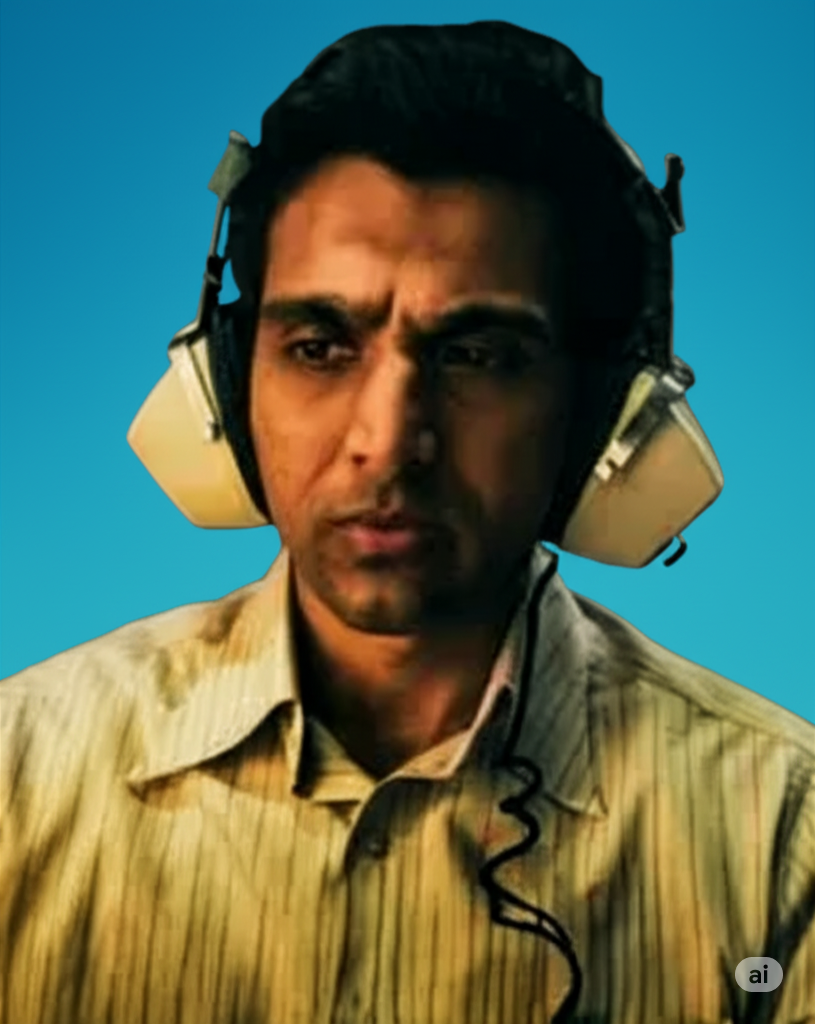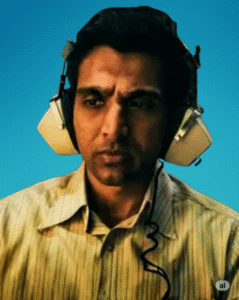
“Saare Jahan Se Achcha” (originally planned as a film about Rakesh Sharma, the first Indian astronaut). This project seems to have been in development for a long time with various actors considered (Shah Rukh Khan, Vicky Kaushal, Salman Khan), but its current status as a film is unclear, and it appears to have been shelved or reimagined as the web series.
Based on the most recent search results, the prominent “Saare Jahan Se Accha” that is currently in the news and releasing soon is the Netflix web series.
Here’s the information for the “Saare Jahan Se Accha” (2025) Netflix web series:
- Genre: Espionage Thriller, Drama
- Release Date: August 13, 2025 (on Netflix)
- Plot: Set in the turbulent 1970s, the series follows a resilient Indian intelligence officer, Vishnu Shankar, who embarks on a high-stakes mission. His goal is to outwit and defeat his counterpart across the border in a battle of wits and tradecraft to sabotage a dangerous nuclear program. The story delves into the covert operations of Indian intelligence and the sacrifices made by those who protect the nation from the shadows.
- Cast:
- Pratik Gandhi as Vishnu Shankar (the intelligence officer)
- Sunny Hinduja
- Anup Soni
- Rajat Kapoor
- Tillotama Shome
- Kritika Kamra
- Suhail Nayyar
- Created by: Gaurav Shukla
- Directed by: Sumit Purohit
- Creative Producer: Bhavesh Mandalia
- Produced by: Bombay Fables
The Narrative of ‘Saare Jahan Se Accha’: A Detailed Cinematic Story
The film Saare Jahan Se Accha is conceived as an epic biographical drama, a meticulously detailed account of Wing Commander Rakesh Sharma’s life and the historic space mission that transformed him into a national icon. This narrative is an exploration of personal dedication, the unwavering spirit of a nation, and the profound journey of a man who looked back at his homeland from a perspective few have ever experienced. It is a story designed to evoke a powerful sense of collective pride and to inspire future generations through a hero’s quest.
Act I: Formative Years and Professional Dedication
The story begins in the tranquil, unassuming setting of Patiala in the 1950s. We are introduced to Rakesh Sharma not as a future cosmonaut, but as a young boy with an insatiable curiosity about the skies. His days are often spent on the rooftop of his modest home, gazing upwards, his eyes following the trails of aircraft as they etch their paths across the blue canvas. The screenplay would capture these moments with visual poetry, depicting his fascination not as a fleeting childhood fancy but as a deep-seated, almost spiritual connection to the cosmos. His hands, though small, are adept at crafting intricate models of airplanes, his imagination taking flight with each carefully glued wing and painted propeller.
His family life, rooted in a middle-class ethos, is portrayed as the bedrock of his character. His father, a man of modest means but immeasurable foresight, is a constant source of encouragement. A pivotal scene might show his father, noticing Rakesh’s unwavering interest, presenting him with a book on aviation history—a symbolic act that validates his son’s dreams and places a tangible foundation under his aspirations. This familial support instills in young Rakesh a sense of purpose and the belief that passion, when coupled with discipline, can overcome any socioeconomic barrier.
The narrative advances to the late 1960s, with a significant transition to the rigorous environment of the National Defence Academy (NDA). Here, the boy from Patiala begins his transformation into a soldier. This section of the film is dedicated to showcasing the physical and mental crucible that is military training. We see the grueling obstacle courses, the early morning drills, and the intense academic curriculum. These scenes would not only highlight the physical toll but also the psychological resilience required. The film would feature a montage of his training, from learning the physics of flight to mastering the complexities of a fighter jet’s cockpit. His unwavering focus and ability to perform under pressure set him apart from his peers. A particular scene could depict him acing a complex simulation while others falter, demonstrating a rare combination of innate talent and an almost preternatural calm. He forms a close-knit bond with his fellow cadets, a brotherhood forged in shared hardship and a common goal of serving their country. The narrative emphasizes that his journey is not solitary; it is supported by the camaraderie and mutual respect of his colleagues.
The story’s first major climax is the 1971 Indo-Pak war. As a junior MiG-21 pilot, Sharma is thrust into the maelstrom of aerial combat. This segment is designed to be a high-stakes, adrenaline-fueled account of his operational debut. The film would place the audience in the cockpit with him, capturing the claustrophobia and the exhilaration of a dogfight. We would see him navigate through the chaos, relying on his training and instincts to outmaneuver enemy aircraft. These sequences are not just about action; they are a critical study in his character. His participation in the war is a defining experience, a rite of passage that cements his resolve and deepens his patriotism from an abstract ideal into a visceral commitment. He emerges from the conflict not just as a decorated pilot but as a man who has stared death in the face and found an even stronger reason to live and serve his nation.
Act II: Selection and Preparatory Phase for a Space Mission
The mid-point of the narrative opens in the early 1980s, a time when the world stage is dominated by the strategic competition of the Cold War. India, a non-aligned nation, seeks to make its own statement in the realm of space technology. The collaborative initiative with the Soviet Union’s Interkosmos program is announced, a momentous decision to send the first Indian citizen into space. The news is met with a mix of excitement and disbelief within the Indian Air Force. For many, it is a dream; for some, a daunting challenge.
Saare Jahan Se Accha
Sharma, now a seasoned squadron leader with a distinguished combat record, volunteers for the mission without hesitation. The film would then meticulously detail the selection process, a gauntlet of tests designed to push human limits. This is a dramatic phase where we see India’s finest pilots pitted against each other. The medical evaluations are unprecedentedly strict, scrutinizing every aspect of physical and physiological health. The psychological tests are even more rigorous, designed to assess a candidate’s mental fortitude in extreme isolation and high-stress environments. We see scenes of Sharma in a centrifuge, enduring G-forces that distort his vision and test his endurance, and in isolation chambers where the only sound is his own heartbeat. From the initial pool of 150 elite pilots, the field narrows, and Sharma’s selection as one of the final two candidates is a testament to his exceptional physical and mental constitution.
The journey then shifts dramatically, geographically and culturally, as Sharma travels to the Yuri Gagarin Cosmonaut Training Center, Star City, in the Soviet Union. This is an immersive cultural experience, where the Indian pilot must adapt to a new language, a new way of life, and an entirely different technological ethos. The training regimen becomes even more intense, a grueling fusion of physical conditioning, academic instruction, and mission-specific simulations. The narrative would highlight specific training sequences: practicing docking procedures in a complex simulator, learning to perform experiments in a weightless environment, and undergoing survival training in a hostile, remote wilderness.
A central theme of this act is the growing camaraderie between Sharma and his Soviet crewmates, Yury Malyshev and Gennadi Strekalov. Initially, there might be moments of cultural misunderstanding or communication challenges, but these are quickly overcome by their shared purpose and mutual respect. The film would depict them as a unified team, not just pilots from different nations but a single, symbiotic unit preparing for a dangerous journey. Sharma’s role expands beyond that of a mere passenger or pilot; he is a research scientist, entrusted with performing critical scientific and medical experiments that would benefit India. The screenplay would underscore his dedication, showing his meticulous attention to detail and his profound understanding of the scientific objectives of the mission. Simultaneously, the personal toll of his isolation is explored through scenes with his wife, who remains a steadfast source of strength and support, grappling with the immense risk he has undertaken. Her story becomes a parallel narrative of quiet courage and sacrifice.
Act III: The Pioneering Spaceflight
The final act begins with the date circled in the national calendar: April 2, 1984. The atmosphere is charged with a blend of anticipation, anxiety, and hope. The film would build this tension through a series of parallel scenes: Sharma and his crew making their final preparations, his family watching the broadcast from their home, and millions of Indians gathering around television sets, their collective breath held in a single moment of shared destiny.
The launch of the Soyuz T-11 spacecraft is a cinematic centerpiece. The film would capture the raw power of the liftoff, the thunderous roar, the violent shaking, and then the surreal, serene transition into the weightlessness of orbit. For Sharma, this is the culmination of a lifetime of dreams. As the spacecraft ascends, the narrative cuts between the inside of the capsule and the families on the ground, creating a powerful emotional link. The moment Sharma sees his homeland for the first time from this unprecedented vantage point is a deeply moving experience. The film would not just show this; it would allow the audience to share his awe, exploring the visual spectacle of a unified Earth, a world without boundaries, a single entity floating in the vastness of space.
The mission itself is presented as a seven-day odyssey. The narrative follows Sharma as he methodically executes his scientific experiments, from observing Earth’s geography to testing the effects of microgravity on the human body. These scenes are interspersed with more contemplative moments of quiet introspection. The camera would linger on his face as he gazes out the window, reflecting on the fragility of Earth and the interconnectedness of all life. It is in these moments that the hero’s journey transcends a national mission and becomes a universal human experience.
Saare Jahan Se Accha
The emotional zenith of the film arrives during the live television conference with the Prime Minister, Indira Gandhi. The scene is treated with the solemnity of a historic event. The nation watches as she asks the pivotal question in Hindi: “Upar se Bharat kaisa dikhta hai aapko?” (How does India look from space?). The pause before his response is pregnant with meaning, the weight of a nation’s pride and hope hanging in the silence. Sharma’s answer, delivered with a mix of reverence and profound emotion, is not a technical description but a poetic declaration. He quotes the timeless words of the poet Allama Iqbal, “Saare jahan se achcha.” This statement is the film’s title, its emotional core, and a powerful unifying moment for a diverse nation, making every citizen feel a sense of shared accomplishment and pride in their collective identity.
Epilogue: A Lasting National Influence
The film concludes with Sharma’s successful return to Earth, a triumphant homecoming that is met with a hero’s welcome. The narrative, however, positions his achievement not as a personal triumph but as a symbol of national capability and a source of inspiration. His journey becomes a testament to the idea that with courage, commitment, and national unity, anything is possible. The story would underscore the lasting legacy of his mission, which sparked a new wave of scientific curiosity and national pride among citizens and ignited a generation of young Indians to pursue careers in science and technology, laying the groundwork for India’s future space programs.
Saare Jahan Se Accha
The story’s conclusion leaves the audience with a sense of collective pride and a reminder that true heroism is often found not just in great feats but in the ability to inspire others to dream. Rakesh Sharma’s journey is a powerful testament to the idea that technological progress and national identity can be profoundly intertwined, and that even from the vastness of space, the connection to one’s roots can be the strongest force of all.
Saare Jahan Se Accha movie image









